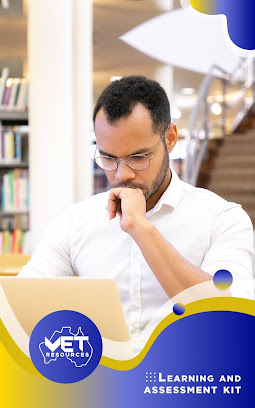Unlocking Career Opportunities: How RPL Helps Australians Turn Experience into Qualifications
In today’s fast-moving world, Australians from all walks of life are looking for smarter, faster ways to gain formal qualifications without starting from scratch. Whether you’re a tradesperson, healthcare worker, hospitality manager, IT professional, or business owner, your years of hard-earned skills and knowledge have tremendous value — even if they were never formally recognised.
This is where Recognition of Prior Learning (RPL) comes in. Understanding the RPL meaning is the first step towards transforming what you know into nationally recognised qualifications that boost your career, salary, and confidence.
But what exactly is RPL, how does it work, what are the benefits, and what should you know before you start? In this article, we’ll explore all of this — plus why choosing the right RTO (Registered Training Organisation) and RTO materials matters.
What Is RPL? Recognition Without Repetition
RPL is a formal assessment process where an RTO evaluates your existing skills, knowledge, and experience to see if they meet the requirements of a specific qualification or unit of competency from the Australian Qualifications Framework (AQF).
Instead of repeating training for what you already know, RPL recognises:
✅ Work experience (paid or unpaid)
✅ Previous study (even if it’s incomplete)
✅ Volunteering, community roles, or life experience
✅ Professional development courses, workshops, or training
✅ Overseas qualifications and experience (with some verification)
For example, a carpenter with 10 years of onsite experience but no formal certificate can apply for a Certificate III in Carpentry through RPL. Similarly, a disability support worker who has worked in community settings for years may gain a Certificate III or IV in Individual Support without attending class — all based on the evidence they provide.
RPL isn’t about skipping learning. It’s about proving you’ve already learned — and that what you know matches national competency standards.
How Does the RPL Process Work?
RPL involves several key steps, typically guided by an RTO assessor:
-
Initial Consultation
You discuss your goals with the RTO and check eligibility for RPL. -
Self-Assessment
You complete a self-assessment to reflect on your skills and match them against the required units. -
Evidence Collection
This is the heart of RPL. You gather work samples, references, photos, videos, job descriptions, payslips, or anything showing you can perform the tasks. -
Assessment Interview
An assessor may interview you, observe you at work, or ask practical questions to confirm your competency. -
Outcome and Certification
If successful, you’re awarded a RPL certificate — the same as someone who completed the course through study.
Importantly, RTOs follow strict ASQA (Australian Skills Quality Authority) guidelines, ensuring the RPL process is fair, valid, reliable, and nationally recognised.
Who Can Benefit from RPL?
RPL isn’t just for trades — it applies across industries. Here are examples:
-
Trades & Construction: Carpenters, plumbers, electricians, tilers, painters, and bricklayers.
-
Health & Community Services: Aged care workers, disability support workers, youth workers.
-
Hospitality: Chefs, cooks, baristas, hotel managers.
-
Business & Management: Office managers, small business owners, team leaders.
-
Information Technology: Network administrators, cybersecurity analysts, software testers.
-
Transport & Logistics: Truck drivers, warehouse managers, forklift operators.
If you’ve got years of experience but no formal qualification — or if you need an Australian equivalent of an overseas qualification — RPL can fast-track your pathway.
Why Are ASQA Standards Important?
The ASQA is Australia’s national regulator for RTOs, ensuring they comply with national quality standards. This protects you as a student and guarantees:
✔ Quality training and assessment practices
✔ Qualified assessors with current industry knowledge
✔ Fair and transparent RPL processes
✔ Proper record-keeping and certification standards
When choosing an RTO, check that they follow ASQA guidelines — not just for credibility, but because your qualification needs to be nationally recognised.
If you’re looking for RTO materials such as learner guides, assessment tools, or RPL kits, they should also align with the relevant training packages and ASQA requirements to ensure compliance.
Benefits of RPL for Australians
Here’s why RPL is a game-changer for many Australians:
1. Save Time and Money
RPL can significantly reduce the time it takes to gain a qualification. Instead of months or years of study, you may complete the process in weeks. It’s often cheaper too because you’re only paying for the assessment — not for attending courses or buying extra learning materials.
2. Increase Employability
Many employers require formal qualifications to meet regulatory, insurance, or contractual obligations. Even if you’re highly skilled, you may be overlooked without certification. RPL formalises your expertise, making you more competitive in the job market.
3. Career Progression
A formal qualification may unlock new career opportunities — such as moving from a worker role to a supervisor, applying for a contractor licence, or accessing higher-paying jobs.
4. Boost Confidence and Recognition
For many, getting certified is not just about jobs — it’s about personal pride, family recognition, or setting an example for their kids.
5. Meet Visa, Licensing, or Membership Requirements
RPL can help overseas workers meet Australian industry requirements, gain licences, or join professional bodies.
Challenges and Tips for RPL Success
While RPL offers many benefits, it’s not automatic. Here’s what you should be prepared for:
-
Evidence Matters: It’s not enough to say you’ve done something — you need to prove it. Keep a file of work samples, photos, videos, letters from employers or clients, and any relevant documents.
-
Stay Organised: Good documentation speeds up the process. Label your evidence clearly, and match it to the specific units or competencies required.
-
Be Honest: Don’t overstate your experience. RTO assessors are skilled at identifying gaps and may suggest further study if needed.
-
Choose the Right RTO: Work with an RTO that has experience in your industry, a strong reputation, and a clear RPL process.
Choosing the Right RTO and Materials
Not all RTOs are created equal. Before you sign up, ask:
-
Are they ASQA-registered?
-
Do they have qualified, experienced assessors?
-
Do they offer clear guidance on evidence requirements?
-
Do they supply quality RTO materials, such as self-assessment tools, templates, and guides?
Using an RTO that invests in top-notch learning and assessment resources — not just cutting corners — improves your RPL experience and outcomes.
If you’re an RTO yourself, investing in professionally developed RTO materials ensures your assessments align with current training package requirements and deliver value to your students.
Real-Life Stories: RPL in Action
Sarah, Aged Care Worker
Sarah had worked in aged care for eight years but never completed a formal qualification. Through RPL, she achieved her Certificate III in Individual Support. This allowed her to apply for higher roles, increase her pay, and enrol in a Diploma-level course to keep advancing.
Mark, Carpenter
Mark had been working in construction since his apprenticeship but never obtained his Certificate III. By compiling photos, references, job descriptions, and site logs, he completed his RPL assessment and now has the formal qualifications to apply for a contractor licence and take on bigger projects.
Priya, Chef
Priya, an experienced chef from overseas, wanted to work in Australia but needed local recognition. With an RPL certificate, she was able to fast-track her migration process and get certified as a chef under Australian standards.
Final Thoughts: Why RPL Matters for Australia’s Future
In a country like Australia, where skills shortages are growing in trades, health, hospitality, and technology, RPL plays a vital role in unlocking the talents of the workforce. It gives people credit for what they already know, reduces training duplication, and builds a more skilled, productive economy.
But most importantly, RPL empowers individuals. It opens doors, gives recognition, and allows Australians to take control of their careers without unnecessary barriers.
If you’re ready to transform your experience into opportunity, now’s the time to explore RPL meaning, check out reputable RTO providers, or if you’re an RTO, source quality RTO materials to deliver outstanding assessment services.
A formal RPL certificate is more than just paper — it’s your ticket to new possibilities, respect, and success.









Comments
Post a Comment